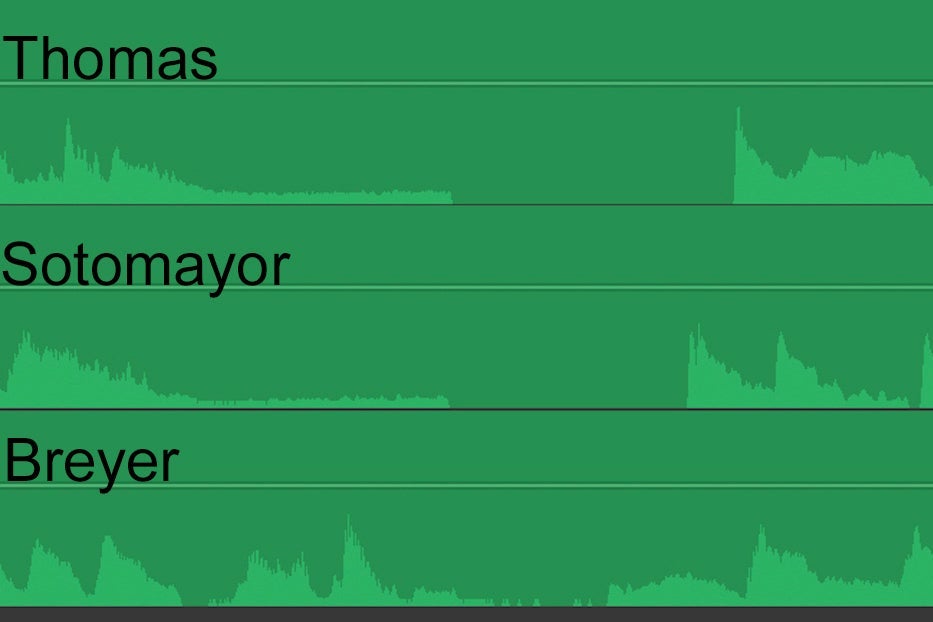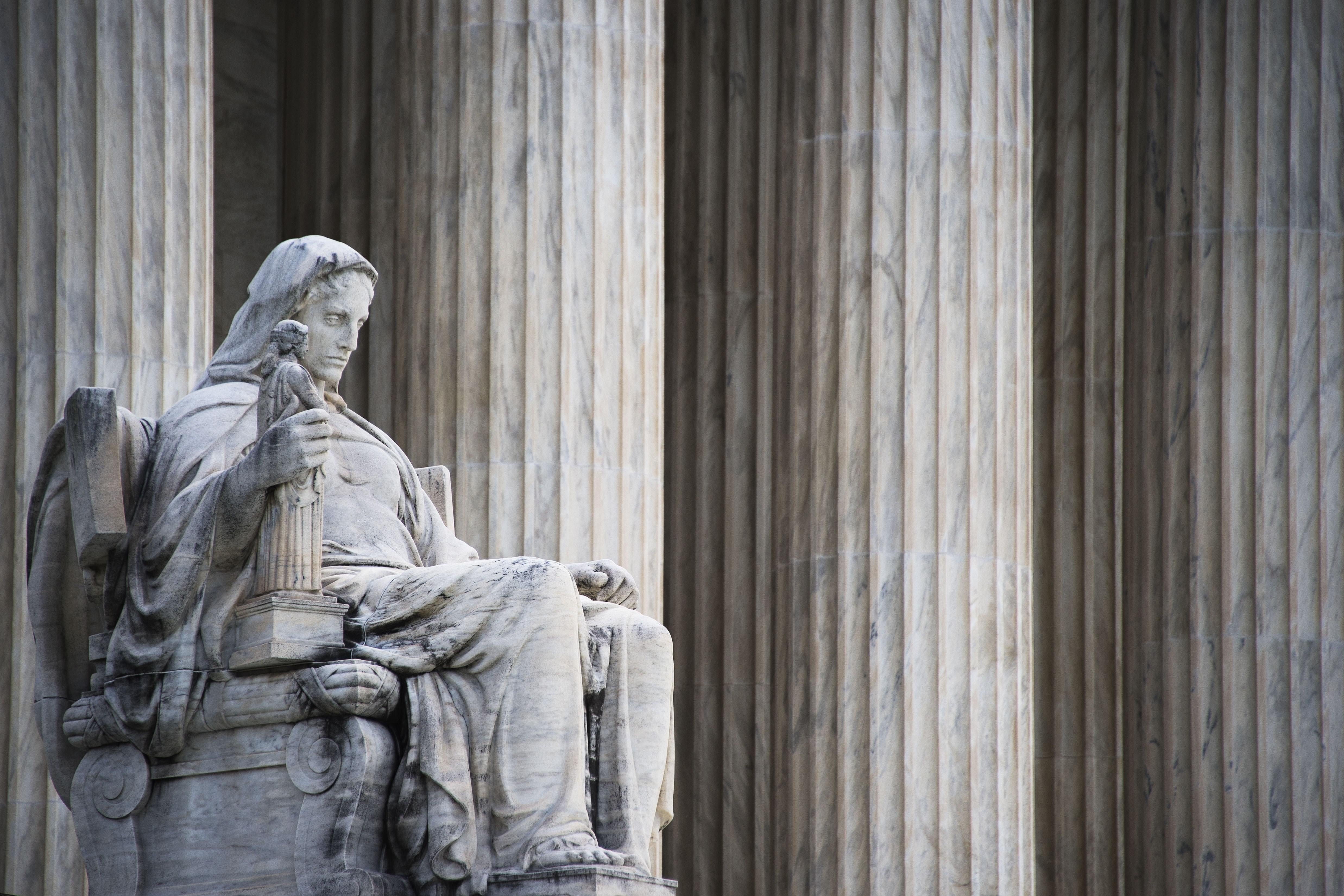On Wednesday at precisely 12:42 p.m., the loud, unmistakable sound of a flushing toilet splashed through the Supreme Court’s third-ever livestream of oral arguments.* It sounded like this:
A phantom toilet flush in any professional setting is an objectively hilarious occurrence. But it becomes doubly so when you consider the intensity and fervor with which Chief Justice John Roberts attempts to maintain the court’s sense of mystical grandeur by keeping its activities almost entirely shielded from view. The current pandemic, however, has forced him to abandon that posture, granting access to the court’s newly telephonic oral arguments to anyone with an internet connection.
But while The Flush may have been Roberts’ worst nightmare, it was a dream come true for many (me). This one, small act of human waste expulsion brought with it mystery, intrigue, and what was almost certainly a pooping Supreme Court justice. (The sound of trickling liquid was nowhere to be heard, making it a near-certainty that the flushed material consisted of solid waste.) What more could an audience want?
It also felt safe to discount Justice Ruth Bader Ginsburg, as she had joined the call from a hospital bed and would have likely had a difficult time moving around freely. What’s more, during Ginsburg’s time to speak, there was a distinct whirring in the background that was simply not present during the flush in question. Justice Sonia Sotomayor has repeatedly had issues with being muted too often, and someone that conscious of keeping her sound off seemed unlikely to overlook the feature during a midargument bathroom break. Similarly, during Wednesday’s first set of arguments, Justice Clarence Thomas was briefly skipped for also not taking himself off mute. So he, too, seems more guarded than careless.
Appearing directly before Justice Elena Kagan’s turn at questioning, though, was Justice Stephen Breyer. At 81, he is the second-oldest justice, after Ginsburg, and the audio evidence points toward him as the likely flusher.
I have come to this conclusion only after careful consideration. Upon first learning about the flush, I realized that while the flush may have been a loud, immediately identifiable intrusion into the court’s audio proceedings, it was highly unlikely to have been the only sound to have made its way through. Surely other parts of the bathroom experience would have reached audible decibel levels. And surely whoever it was would not have unmuted their session strictly for the trip to the bathroom itself.
I played through the rest of the audio, trying to find out exactly when this stray mic might have first turned on—and, in the process, I discovered Breyer having a very suggestive degree of technical difficulties.
So please, join me as we venture through the hallowed audio files of the highest court in the land, and learn which of our greatest legal minds accidentally moved their bowels with the sound on.
We should begin by noting that this wouldn’t be Breyer’s first phone-related disruption. In 2017, for instance, Breyer committed a major faux pas when his phone went off in the middle of a public hearing, despite phones being strictly forbidden in the courtroom. At the time, a spokeswoman called it an “oversight.” And Wednesday, at precisely 12:29 p.m. during the same oral arguments that would soon give us the flush, Roberts repeatedly called on Breyer to begin his questions, only to be met with silence. This was not a case, as with his colleagues, of overuse of the mute button. Two more justices took their turns before Breyer finally appeared, at which point he informed listeners: “The telephone started to ring, and it cut me off the call. And I don’t think it was a robocall, and we got it straightened out.”
All of which is to say, it’s clear that Breyer’s command of his phone’s functionality is tenuous at best.
Breyer also seems to have established a willingness to multitask during arguments. As you can hear in the audio below, when Breyer unmuted at 11:57 a.m. to indicate that he had finished questioning Deputy Solicitor General Malcolm Stewart, he was accompanied by an audible clinking of what sounded very much like dishes.
If that was indeed the sound of Breyer finishing his lunch (the clattering has the unmistakable tone of someone discarding silverware onto an empty plate), it would mean that he had been more than happy to eat and engage in oral arguments simultaneously. The presumptive meal also prompts its own line of speculation. If the flush belonged to Breyer, a bowel movement would have come roughly 43 minutes after the justice’s meal.
This seems feasible. The process of eating encourages a natural physiological response known as “the gastrocolic reflex,” which essentially works to get your colon fired up. That is to say, a little lunch might certainly get things moving along. And while little has been written about Stephen Breyer’s diet, we do know that, during his time on the Supreme Court cafeteria committee, Breyer’s two main accomplishments were a salad bar expansion and the addition of Starbucks coffee—both of which are prime poop facilitators.
More than anything, though, the clattering of dishes from Breyer’s end signals that this is a man who’s not afraid to do more than one thing at a time during tele-court. If he’s willing to dine during his own turn, there’s no telling what sorts of tasks he might be willing to engage in during his colleagues’ turns. Which brings us to the act itself.
While delighted listeners have focused almost exclusively on the flush, upon closer listening, one finds that it’s actually just one part in a symphony of familiar sounds. There’s the groan of a chair as someone seems to rise, the light clang of a toilet lid lifting to meet the tank (or possibly a seat being lowered), the shuffling of a body, and, finally, the distinct plop of a solid mass as it hits liquid. All of it beautiful in its own way.
While I feel confident in my identification of the noises in the majority of the clip, I’m hesitant to say definitively that what sounds like a woman calling out “justice” near the end is indeed that. It could very well be an aide attempting to alert Breyer to what had happened, or it could simply be a false start by Kagan. Either way, the deed had already been done.
Though the entire performance happened during Kagan’s questioning, it came right after Breyer had finished his own turn. This alone would cast suspicion on Breyer, but what’s particularly damaging is how Breyer concludes—or rather, doesn’t.
Listen carefully to what happens to the background noise as Thomas and Sotomayor ask their last questions at other points in the day, and then to Breyer’s final words before Kagan takes over.
When Thomas and Sotomayor each finish, there’s a brief but distinct loss of ambient sound, presumably marking the moment the justices mute their lines. The end of Breyer’s turn, however, contains no such loss. You can even see it in the audio visualization.

In other words, it seems safe to conclude that Breyer never actually muted his line. This, combined with everything else we’ve learned, offers a persuasive account of where the sounds originated.
With his turn complete (or so he believed), why wouldn’t Breyer continue going about his business? The rest, dear reader, is history.
Correction, May 8, 2020: This piece originally misstated that this session of oral arguments was the Supreme Court’s second-ever livestream. It was the court’s third-ever livestream of oral arguments.
